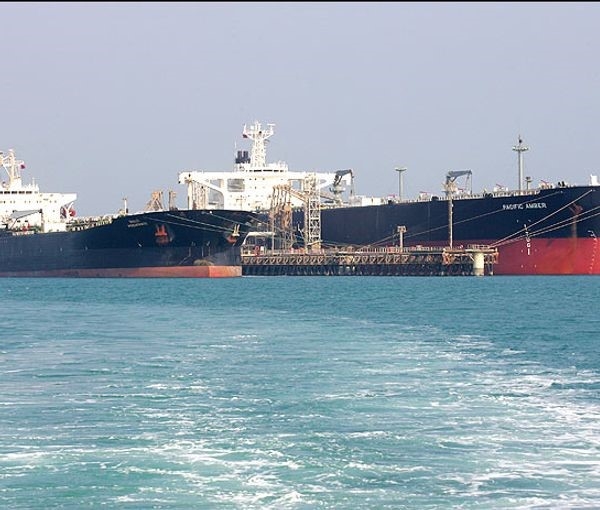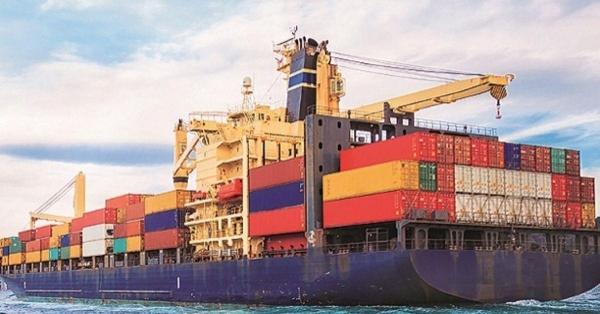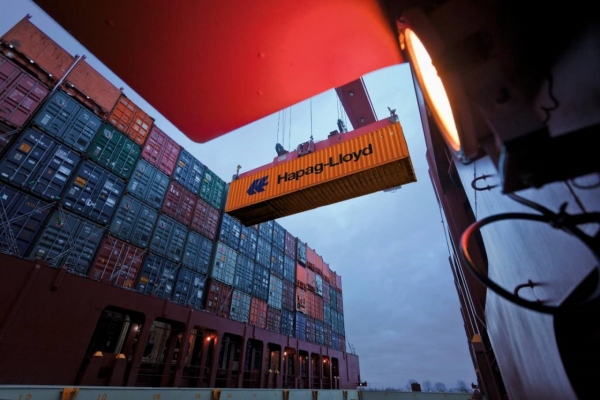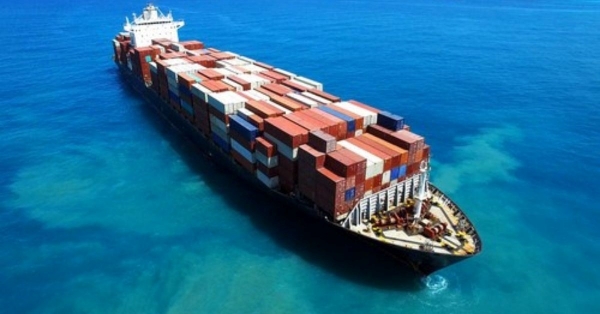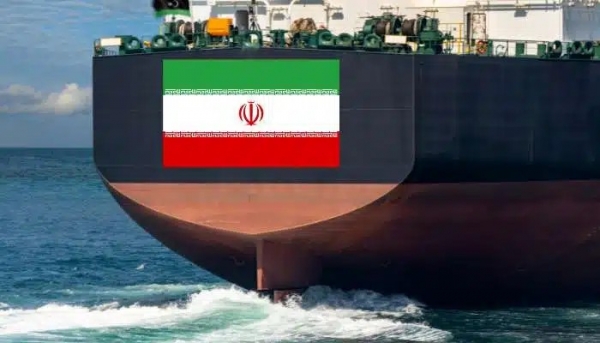News
Latest news
Asia’s crude oil imports hit record high, but it’s not China
Asia’s imports of crude oil reached a record high in January, but the strength wasn’t driven by China, with the world’s biggest buyer actually recording a decline.
Asia’s total imports were 29.13 million barrels per day (bpd), up 11.1% from December’s 26.22 million bpd and eclipsing the previous all-time high of 29.10 million bpd from November, according to data compiled by Refinitiv Oil Research.
Much of the recent market narrative has been how China’s re-opening from COVID-19 lockdowns will drive up crude oil demand, but the data shows this story has yet to play out in reality.
China’s imports were assessed at 10.98 million bpd in January, down from December’s 11.37 million bpd and November’s 11.42 million bpd.
The relatively small decline may be related to the early Lunar New Year holidays, which fell entirely in January this year.
This may have led to some pulling forward of cargoes into December and some pushing back into February.
However, the overall message from China’s crude oil imports is that while they are solid, they have yet to accelerate as expected by the bullish China economic narrative.
This isn’t too surprising as physical demand tends to lag market sentiment, given that cargoes are arranged several months in advance.
This means that any acceleration in China’s crude imports is likely only from March onwards, and even then there are several other factors to consider.
The first is whether the boost to travel, and thus fuel demand, seen over the Lunar New Year is maintained, or whether large parts of China’s population continue to hunker down at home now that the holidays have passed.
It’s likely that COVID-19 will largely fade as a factor in China, just as it has in other countries that have fully re-opened, but how quickly fuel demand recovers and exceeds pre-pandemic levels is still uncertain.
FUEL EXPORTS
Another factor is the price of crude oil and the interplay between China’s inventories and its exports of refined products.
China has ramped up exports of fuels such as diesel and gasoline as Beijing granted export quotas to refiners, a move that boosts economic activity and the refiners’ profitability as they can grab a share of the strong margins for fuel currently available in Asia.
As long as China can secure crude at a price low enough to make fuel exports compelling, it’s likely that refiners will continue to seek to maximise shipments of products.
China has increasingly turned to Russian crude, which is being sold at steep discounts as Moscow seeks to find new markets for its oil after Western countries stopped buying as a result of sanctions and other measures imposed after Russia’s invasion of Ukraine on Feb. 24 last year.
China imported 2.03 million bpd from Russia in January, according to Refinitiv data, up from 1.52 million bpd in December.
This made Russia the top supplier to China, overtaking Saudi Arabia, with imports of 1.77 million bpd from the kingdom.
The two heavyweights of the OPEC+ group have played tag team with each other for the position of top supplier to China since the war started in Ukraine.
A question for the crude market is whether China’s increasing imports from Russia has a price implication for global benchmarks such as Brent crude, given that Russian oil is now largely disconnected from the world system.
While the market waits to see whether China’s economic re-opening and Beijing’s stimulus measures do translate into higher imports, it’s worth looking at where there was strength in Asia.
INDIA RECORD
India, the region’s second-biggest importer, saw January arrivals hit a record high of 5.29 million bpd, up from December’s 4.78 million bpd.
The data shows that Russia maintained its position as top supplier, with January imports of 1.33 million bpd, up from 1.19 million bpd in December.
Prior to the war in Ukraine, Russia was a minor supplier to India, but the availability of cheap oil from Russia’s western ports, which used to go mainly to European refiners, has seen India ramp up imports.
Other major Asian oil buyers also saw gains in January, with South Korea importing 3.11 million bpd, up from 2.85 million bpd in December, while Singapore imported 1.65 million bpd, up from 910,000 bpd.
Japan was the exception, with January imports dropping to 2.83 million bpd from December’s 2.96 million bpd.
The question is whether Asia’s crude imports will be maintained at high levels amid signs that higher interest rates are starting to have some bite on consumer spending and on export-dependent economies such as Japan and South Korea.
India Seeks Public-Private Partnership (PPP) In Coastal Shipping
On February 3, the Indian government announced its plan to invest in coastal shipping. As per the latest budget allocations, India will follow the public-private partnership or PPP model to enhance passenger and freight movements across the eastern and western coasts.
The stress is developing low-cost, energy-efficient systems using VGF and viability gap funding.
Since coastal waterways are low on logistics costs and high on their eco-friendly nature, it’s the best
solution for domestic freight movements, said the Finance Minister while tabling the budget.
Despite having a 7500 km coastline and extensive inland waterways, India’s water-based modal transport is lower than Thailand and Bangladesh, standing at 12% and 16%, respectively. Compared to that, India is at a meagre 6%. This is highlighted in the 10-year roadmap for the Indian maritime sector called the Maritime India Vision 2030, which said that India hadn’t utilized its coast well for efficient supply chain ventures.
Apart from this, the 2030 maritime vision calls for PPP in RoRo and ferry services through management-based contracts or operation and maintenance (O&M) contracts.
This will reduce the cost for end users and reduce pollution levels (noise and air pollution). The proposed plan will lower accidents as well.
However, to support this, we need better last-mile and first-mile connectivity as costs and lead times become vital competition issues.
In the past, the shipping ministry had reduced tariffs for coastal cargo, given priority berthing to coastal vessels, made green channels for faster cargo clearance and vessel availability relaxed cabotage rules.
All of this will collectively aid in bettering coastal shipping facilities.
US Cargo Ship Delivers New Causeway Along with Supplies to Antarctic
We began offloading our equipment from the Ocean Giant right away so that we could build the pier where the ice-pier was,” said Staff Sgt. Donald Harris, 7th TB(X) pilot of the pier. The brigade’s role is causeway building and they use the U.S. Army’s modular system which is unique because it has a one-foot draft permitting it to get closer to shore.
The brigade faced the added challenge of dealing with sheets of ice that litter the harbor and move and spin from the wind. Commanders said it was good training handling ice noting that they had to break ice twice before in 2012 and again in 2020.
The 7th TB(X) joined with the Seabees from Navy Cargo Handling Battalion One who have been working around the clock since Ocean Giant arrived to offload the 443 pieces of cargo. This year’s shipment includes containers filled with mechanical parts, vehicles, construction materials, office supplies, and electronics equipment and vehicles. The supplies will provide nearly 80 percent of the items needed for survival over the severe arctic winter when the station is cut off from the rest of the world.
The cargo handlers work with Ocean Giant’s crew, and the MSC representative, to execute the offload and backload of a variety of cargo. The Antarctic Support Contract logistics team manages the loads and stow plans for the United States Antarctic Program, as well as the New Zealand Defense Force who assist with rigging and transporting loads from the pier to designated laydown areas. Ocean Giant is being joined on this year’s mission by a second cargo ship, Ocean Gladiator (17,700 dwt), which is currently in Lyttelton, New Zealand before departing for McMurdo Station.
Upon completion of their cargo offload, Ocean Giant will load containers of retrograde as well as ice-core samples for scientific study, and return to Port Hueneme. MSC-chartered ships have made the challenging voyage to Antarctica every year since the station and its resupply missions were established in 1955.
Non-Alliance Carriers are Losing Market Share After Years of Growth
After enjoying strong growth during the shipping surge experienced over the past two years, Sea-Intelligence reports that non-alliance carriers are again losing market share. With the current levels of overcapacity rising across most segments of the container shipping industry and possibly getting worse as more new tonnage enters the market, the analysis firm is predicting that the market share for the independent carriers will continue to decline.
“As the market strengthened after the initial Covid hit, there was a confluence of small carriers that started to deploy capacity, especially on the transpacific trade,” said Alan Murphy, CEO of Sea-Intelligence. He notes major carriers also started to introduce services outside the alliance networks. “The idea was to take advantage of the opportunity provided by the very high freight rate environment.”
Taiwan-based carrier Wan Hai for example in 2020 launched an independent transpacific route after its alliance with Pacific International Lines and COSCO ended. In addition, new specialized carriers emerged seeking to offer niche services and appealing to shippers that found it difficult to place smaller cargoes with the big carriers.
According to Sea-Intelligence’s data, non-alliance carriers were able to increase their share in the three key regions, including Asia to the West and East coasts of North America and Asia to Northern Europe and the Mediterranean.
For the West Coast trade lines, Sea-Intelligence calculates that non-alliance carriers rose from an average of just above 15 percent of capacity before the pandemic to approaching nearly 40 percent of capacity at the end of 2021 and the beginning of 2022. The addition of these non-alliance services Sea-Intelligence says meant that at the peak of the market, the market share of non-alliance carriers had essentially doubled.
“But as the freight rates began to drop in 2022, the share of non-alliance services also began to decline, and looking into 2023-Q1, they are poised to continue to decline,” predicts Murphy. “There is still more relative capacity operated by non-alliance services than before the pandemic, but if the rate of decline continues, this will revert back to pre-Covid levels before the end of 2023.”
On the Asia-North America East Coast routes, Sea-Intelligence reports there was a similar trend of increasing non-alliance capacity as the market initially strengthened. “However, even though there is a distinct decline coming into 2023, there is no sign presently that we are about to go back to pre-pandemic levels,” says Murphy.
On the Asia-Europe trades, the non-alliance capacity has increased, but not materially according to Sea-Intelligence. They calculate that the independent carriers represent between two and five percent of capacity. However, on the Asia-Mediterranean routes, there are no signs of non-alliance services reducing their market share in 2023-Q1.
The domination by the alliances has been a rising concern for regulators in many parts of the world. It was a major issue cited in the U.S. markets by the president and other elected officials driving the passage of the reforms to the Shipping Act in 2022. The World Shipping Council for example argued that the alliances create greater market efficiency while the White House cited the rapid growth in the three alliances. They contended that from 1996 to 2011 the major alliances grew from operating about 30 percent of global container shipping compared to 80 percent of global containership capacity and 95 percent of the east-west trade lines in 2022.
Crew Stuck at Sea is Low Despite Renewed COVID Concerns From China
The Neptune Declaration Crew Change Indicator, which was launched in May 2021 to track the predominance of crew stuck at sea, is at its lowest level since it was launched. Yet, while the situation remains fairly stable, the Global Maritime Forum which compiles the indicator says the rise of infections in China is a cause for concern as other countries reintroduce restrictions.
Built from aggregated data from ten leading ship managers, the Neptune Declaration Crew Change Indicator looks to identify seafarers either at or near the end of their contracts. Now provided on a quarterly basis, for the fourth quarter the indicator showed that only 2.7 percent of seafarers are still stuck onboard vessels beyond their contract expiration, down six-tenths of a percent. At the same time, the percentage of seafarers onboard vessels for more than 11 months fell to just two-tenths of one percent, a decrease of 0.1 percentage points since October.
“The numbers trend in the right direction, but the figures still represent thousands of seafarers who can’t get to work or journey home as they were supposed to,” said Susanne Justesen, GMF Project Director for Human Sustainability. “The fundamental issues of seafarers not being treated as key workers also haven’t changed, which will be a global problem if the pandemic resurges or when we face a similar problem in the future.”
Ship managers contributing to the report also said that they believe that the recent easing of restrictions in China is simultaneously encouraging and concerning. China recently officially relaxed its national policy for COVID-19 which among other things dropped most of the restrictions impacting crew changes and shore leave. For example, the requirements for quarantine were removed, yet the managers note that local and central governments in China are not yet aligned. They report that crew changes in China are very reliant on local agents to ensure compliance with regulations.
After China ended its official no COVID policy and reopened its borders, the country experienced a spike in cases. It has been hard to determine the full extent of the latest surge due to a lack of transparency from China.
An analysis by Airfinity, a London-based global health intelligence firm, for example, is raising concern that China might be staring at one longer, more severe COVID wave as the Lunar New Year festival fuels infections. Cases they speculate could peak at 4.8 million a day with 62 million infections predicted across the period from January 13 to 27, before beginning to fall. Deaths are forecast to peak at 36,000 a day on January 26 during the Lunar New Year Festival, up from the previous estimate of deaths peaking at 25,000 a day.
Fears of this spike and the possibility that it would again spread beyond China’s borders are driving countries such as India, Japan, and South Korea to implement new test requirements and restrictions on travelers including seafarers arriving from specific areas in Asia. India for example imposed mandatory COVID-19 negative test reports for travelers arriving from China, Japan, South Korea, Hong Kong, and Thailand. Japan, which is also recording an increase in new cases, has decided to tighten border controls for COVID-19 by requiring tests for all visitors from China.
The indicator however also shows that the number of seafarers vaccinated against COVID-19 is high and continues to rise. They are reporting that the number of vaccinated seafarers reached 95.6 percent up a further 2.7 percent versus the third quarter of 2022. In addition, some ship managers are reporting as an added protection they have opted to replace non-vaccinated crew members with vaccinated crew members when possible.
Panama Withdrew Flags From 136 Ships That Helped Iran Evade Sanctions
Panama’s shipping registry says it has withdrawn its flag from 136 vessels linked to Islamic Republic in the last four years, denying claims it is knowingly helping Iran violate sanctions.
"The Panamanian registry canceled 136 ships in which their direct link with the National Iranian Oil Company (NIOC) was proven," Panama's Maritime Authority (AMP), said in a statement late on Tuesday. According to the US Treasury, the NIOC has strong links with Iran’s Islamic Revolutionary Guard Corps, which is coordinating the country’s sanctions evasion campaign.
An AMP spokesperson said that one-fifth of the 678 ships for which the registry withdrew flags for various reasons since 2019 were Iran-linked, adding "Panamanian authorities maintain a close relationship with the US secretary of the Treasury and other authorities of the United States.
Providing its flag to some 8,650 ships, the AMP runs the world’s largest vessel registry with 16 percent of the global fleet. It denied failing to act on evidence that tankers operating under its flag had shipped Iranian crude oil in contravention of US sanctions, reacting to allegations by United Against Nuclear Iran (UANI), which seeks to prevent the Islamic Republic from becoming a nuclear-armed regional superpower.
On Monday, former Florida Governor Jeb Bush, who is a member of UANI, called on Washington to pressure Panama to stop "helping" Tehran to evade sanctions.
Shipments of Iranian crude were much higher in 2022 than in 2019 and 2020, when US sanctions had a greater impact. Iran boosted illicit shipments to China from late 2020 as Joe Biden got elected US president and pledged to return to the 2015 nuclear deal, the JCPOA.
Earlier in the month, Iranian navy commander Rear Admiral Shahram Irani said Tehran is planning to extend its area of operation to the Panama Canal that divides South and North America.
Regular container shipping line active from Iran’s Chabahar to Indian ports
Spokesman of Iran’s Valfajr Shipping Company says his company is operating a regular container shipping line from southeastern Chabahar port to various ports in India.
According to Abbas Kabousi, 15 voyages have been conducted along the mentioned line over the past three months, ISNA reported.
“The first vessel with a full capacity of 550 TEU arrived in Chabahar from Indian ports a few weeks ago and its cargo has been completely unloaded,” Kabousi said, adding that his company is ready to transport more goods between Indian ports and Chabahar port.
The official noted that his company has also been operating some direct lines from Persian Gulf Arab countries to Chabahar port.
“Valfajr Shipping Company has reduced the time of cargo transportation on the route from the southern ports of the Persian Gulf to Chabahar while reducing the freight rate and improving the schedules,” he said.
Kabousi further said the shipping company is ready to launch a direct line from Oman to Chabahar port.
Back in May 2022, Iran’s Ports and Maritime Organization (PMO) announced that three direct
container shipping lines were launched from Chabahar Port to Nhava Sheva and Kandla ports in India as well as Jebel Ali Port in United Arab Emirate.
Iran and India had previously launched shipping lines between Chabahar and the Indian ports of Mumbai, and Mundra.
The first shipping route between the two countries was put into operation in 2017 between Iran’s Chabahar port and Mumbai.
In January 2019, Iran and India inaugurated the second direct shipping route which passes
through Mumbai, Mundra, Kandla, Chabahar, and finally Bandar Abbas in southern Iran.
India is using the mentioned shipping routes to transit goods to Afghanistan and Persian Gulf nations as well as the countries in Central Asia.
Through Chabahar port India can bypass Pakistan and transport goods to Afghanistan and Central Asia, while Afghanistan can get linked to India via sea.
Iran has awarded India the project for installing and operating modern loading and unloading equipment including mobile harbor cranes in Shahid Beheshti Port in Chabahar.
The strategic Chabahar port in southeastern Iran is the only ocean port on the Makran coast and it has a special place in the country’s economic affairs.
Back in September 2021, Indian Prime Minister Narendra Modi had called on Central Asian countries to benefit from Chabahar Port capacities for expanding their trade in the region.
Hapag-Lloyd completes acquisition of stake in Spinelli Group
Antitrust authorities have approved Hapag-Lloyd’s acquisition of a minority stake in the Spinelli Group, after signing took place in September 2022.
With the closing of the transaction, Hapag-Lloyd has acquired 49% of the shares in one of Italy’s leading terminal and transport operators Spinelli Group. The remaining 51% of the shares in the corporate group remain in the hands of the Spinelli family. The parties have agreed to not disclose any financial details of the deal.
In driving its Strategy 2023, Hapag-Lloyd has continuously expanded its involvement in the terminal sector, most recently through an agreement to acquire a stake in the terminal business of Chile-based SM SAAM.
In addition to the now completed investment in the Italy-based Spinelli Group, Hapag-Lloyd also has stakes in JadeWeserPort in Wilhelmshaven, the Container Terminal Altenwerder in Hamburg, Terminal TC3 in Tangier, and Terminal 2 in Damietta, Egypt, which is currently under construction
Bangladesh Asks Russia Not To Send Cargo On 69 US-Sanctioned Ships
On Sunday, January 22, Bangladesh requested Russia against sending embargoed cargo ships as they don’t want to sour relationships with the US. The move came when an embargoed ship carrying goods for the Rooppur plant wasn’t allowed to dock.
Dr AK Abdul, Bangladesh Foreign Minster, said that Russia had been advised not to send 69 US-sanctioned ships to the country.
Sparta III carrying goods for the Rooppur power plant, wasn’t allowed to dock at the Mongla port on December 24. The Foreign Minister highlighted how Russia changed the ship’s name to avoid sanctions.
Before the ship’s arrival, the US Embassy informed Bangladesh authorities about the vessel, stating it was indeed the embargoed ship Ursa Major, classified as Attack Cargo Ship (AKA) on their sanctions list. The vessel comes equipped with troops and equipment along with cargo.
Bangladesh Prime Minister Sheikh Hasina is concerned about the situation as it could affect the country’s economic conditions.
Iran Downplays Panama’s Decision To Deregister Its Ships
Iran has downplayed Panama’s decision to deregister Iranian-flagged vessels, calling it “insignificant”. The Ports and Maritime Organization (PMO) of Iran have stated that they will be using their tankers and ships irrespective of the move.
In a statement issued last Sunday, the PMO blasted the publicizing of this decision, stating that Panama’s Maritime Authority (AMP) is pleasing the US by doing this. Earlier on January 17, AMPR deregistered 136 ships that belonged to the state oil company of Iran.
The statement said that the publicization was because of the US government’s political pressure. The Panama authorities should consider the repercussions of such public comments as they are likely to have international and legal implications.
This decision by the AMP came after some US politicians expressed concern over Iran’s crude oil export increase in 2022, even though the US has imposed sanctions on them. Anti-Iran lobbies have highlighted that Iranian ships carrying oil have Panama flags.
Iran has announced that they will import and export goods to the country through these vessels under the flag of Iran instead of the Panama flag.
























